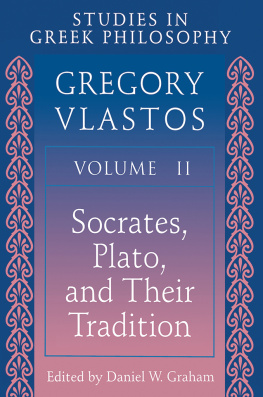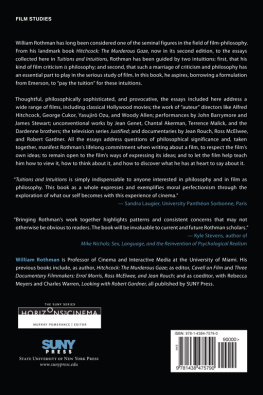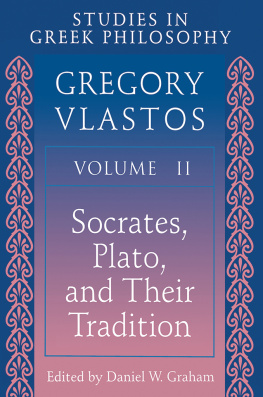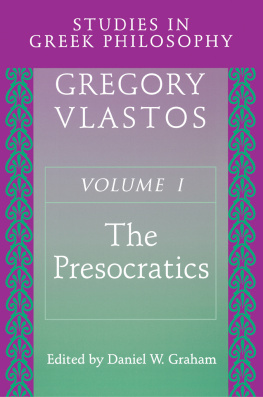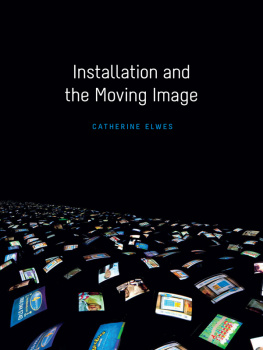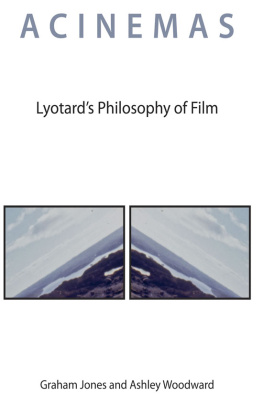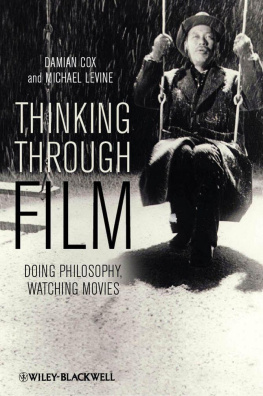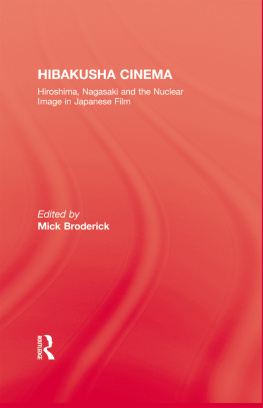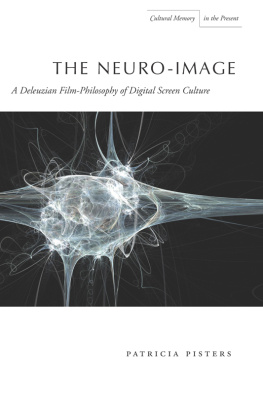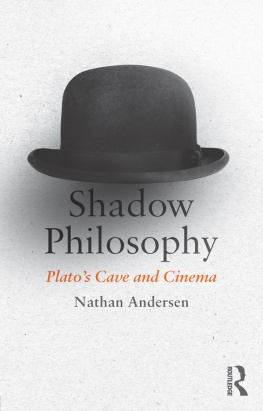Philosophy and the Moving Image
THINKING ART
Series Editors
Nol Carroll and Jesse Prinz, CUNY Graduate Center
Thinking Art fills an important gap in contemporary philosophy of art, focusing on cutting edge ideas and approaches to the subject.
Published in the Series:
Attentional Agency:
A Perceptual Theory of the Arts
William P. Seeley
Apt Imaginings:
Feelings for Fictions and Other Creatures of the Mind
Jonathan Gilmore
Games:
Agency As Art
C. Thi Nguyen
Art Scents:
Exploring the Aesthetics of Smell and the Olfactory Arts
Larry Shiner
Artistic Creation and Ethical Criticism
Ted Nannicelli
Dangerous Art:
On Moral Criticism of Artworks
James Harold
Philosophy and the Moving Image:
Selected Essays
Nol Carroll

Oxford University Press is a department of the University of Oxford. It furthers the Universitys objective of excellence in research, scholarship, and education by publishing worldwide. Oxford is a registered trade mark of Oxford University Press in the UK and certain other countries.
Published in the United States of America by Oxford University Press
198 Madison Avenue, New York, NY 10016, United States of America.
Oxford University Press 2021
All rights reserved. No part of this publication may be reproduced, stored in a retrieval system, or transmitted, in any form or by any means, without the prior permission in writing of Oxford University Press, or as expressly permitted by law, by license, or under terms agreed with the appropriate reproduction rights organization. Inquiries concerning reproduction outside the scope of the above should be sent to the Rights Department, Oxford University Press, at the address above.
You must not circulate this work in any other form and you must impose this same condition on any acquirer.
Library of Congress Cataloging-in-Publication Data
Names: Carroll, Nol, 1947 author.
Title: Philosophy and the moving image : selected essays / Nol Carroll.
Description: New York : Oxford University Press, 2021. |
Series: Thinking art series | Includes bibliographical references and index. |
Identifiers: LCCN 2020038358 (print) | LCCN 2020038359 (ebook) |
ISBN 9780190683306 (hardback) | ISBN 9780190683320 (epub)
Subjects: LCSH: Motion picturesPhilosophy. | TelevisionPhilosophy.
Classification: LCC PN1995 .C3573 2021 (print) |
LCC PN1995 (ebook) | DDC 791.4301dc23
LC record available at https://lccn.loc.gov/2020038358
LC ebook record available at https://lccn.loc.gov/2020038359
DOI: 10.1093/oso/9780190683306.001.0001
In memory of Monroe Beardsley, a founding father, the dean of American aesthetics
Contents
With William P. Seeley
With Margaret Moore
Nol Carroll, Toward an Ontology of the Moving Image. Published in Film and Philosophy, ed. Cynthia Freeland and Tom. Wartenberg (New York: Routledge, 1995) pp. 6885.
Nol Carroll, Motion Picture Narration in CURRENT CONTROVERSIES IN PHILOSOPHY OF FILM, edited by Katherine Thomson-Jones (New York: Routledge, 2016), pp. 115127.
Nol Carroll, Movie-Made Philosophy. Published in: Film as Philosophy edited by Bernd Herzogenrath (Minneapolis: University of. Minnesota Press, 2017), pp. 265285.
Nol Carroll, Philosophizing Through the Moving Image: The Case of Serene Velocity The Journal of Aesthetics and Art Criticism Vol. 64, No. 1, Special Issue: Thinking through Cinema: Film as Philosophy (Winter, 2006), pp. 173185
Noel Carroll, Warhols EMPIRE, in UNWATCHABLE, edited by Nicholas Baer, Maggie Hennefeld, Laura Horak, and Gunnar Iversen ((New Brunswick: Rutgers University Press, 2019), pp. 189193.
Nol Carroll (with William P Seeley), Cognitivism, Psychology, and Neuroscience: Movies as Attentional Engines Psychocinematics: Exploring Cognition at the Movies edited by A. Shimamura (New York: Oxford UP, 2013) pp. 5375.
Nol Carroll, Movies, Narrative, and Emotion. Philosophy and Film: Bridging Divides. Christina Rawls, Diana Neiva & Steven Gouveia (eds.), Routledge. pp. 209221 (2019)
Nol Carroll, Subjectivity, the Emotions, and the Movies. Expression in the Performing Arts. Edited by Inma lvarez, Hctor J. Prez and Francisca Prez-Carreo (Cambridge Scholars Publishing, 2010) pp. 182202.
Nol Carroll, Moral Change: Fiction, Film, and Family. Cine-Ethics, edited by Jinhee Choi and Mattias Frey (London: Routledge, 2014) pp. 4356.
Nol Carroll, Rough Heroes: A Response to A.W. Eaton. The Journal of Aesthetics and Art Criticism Vol. 71, No. 4 (FALL 2013), pp. 371376
Nol Carroll, Talk to Them: An Introduction, in Talk to Her, edited by Anne Westcott Eaton (London: Routledge, 2008) pp. 110.
Nol Carroll, Vertigo: The Impossible Love. Vertigo (Philosophers on Film), edited by Katalin Makkai (Routledge, 2013) pp. 7188.
Nol Carroll, Science Fiction, Philosophy and Politics: Planet of the Apes as a Thought Experiment Ethical Perspectives Vol. 20, No. 3 (2013), pp. 477493.
Nol Carroll, Yvonne Rainer and the Recuperation of Everyday Life Yvonne Rainer: radical juxtapositions 1961-2002 [curated by] Sid Sachs (The University of the Arts, 2003), pp. 6585.
Nol Carroll, Amy Schumer or the Incongruities Amy Schumer and Philosophy Popular Culture and Philosophy, edited by Charlene Elsby and Rob Luzecky (Chicago: Open Court, 2018), pp. 7584.
Noel Carroll (with Sally Banes), "Dogma Dance," in PURITY AND PROVOCATION: DOGMA 95, edited by Mette Hjort and Scott McKenzie (London: British Film Institute, 2003), pp. 173182.
Nol Carroll, Bla Balsz: The Face of Cinema October Magazine No. 148 (2014) pp. 5362.
Nol Carroll, Eisensteins Philosophy of Film Camera Obscura, Camera Lucida: Essays in Honor of Annette Michelson. Edited by Richard Allen and Malcom Turvey. (Amsterdam University Press, 2003) pp. 127146.
Nol Carroll, Revisiting The World ViewedThe Thought of Stanley Cavell and Cinema: Turning Anew to the Ontology of Film a Half-Century after The World Viewed. Ed. David LaRocca (Bloomsbury Academic, 2020) pp. 4162.
This book is a collection of essays by me on various relations between philosophy and the moving imagemy label for film, television, video, computer-generated imagery, virtual reality, and whatever moving imagery technologies come next. I favor the designation moving images rather than the more common motion pictures in order to include under the concept abstract as well as realistic, moving, visual arrays.
During the last three or four decades, philosophical interest in the moving image has exploded. Sociologically, perhaps one of the reasons for this is that the baby-boomer generationwhich was nurtured on television, including recycled, old moviescame of professional age during that period and they used their position to turn their attention to what for many of them was their first encounter with art.
This is not to say that earlier philosophers were not interested in the moving image; many, like Stanley Cavell, were. Indeed, his book The World Viewed, published in 1971, is probably what won the stamp of legitimacy for the philosophical interrogation of the moving image for anglophone philosophers. And once approval was secured, the veritable gold rush began.



